#Every ninja turtle was named after a historical artistic figure
Explore tagged Tumblr posts
Text
I like to imagine myself as cool and mysterious but all I do is yap and the mystery comes from my incredibly out of pocket facts that I retain better than actual education
#michelangelo painted the man who commissioned the Sistine Chapel with a snake biting his genitilia because he complained about the mural#Rasputin's genetilia was preserved (I'm pretty sure by a family member)#Allegedly Hugh Jackman gets constant criticism for how nice he is as a person#Some recent 'statistics' have pinpointed some cancers to frequent alcohol consumption#idk how true the hugh jackman and alcohol things are#sorry there's a lot about body parts i thought it was funny#Also Michelangelo was gay for the few people that didn't know#Every ninja turtle was named after a historical artistic figure#i think that's obvious now but i actually didn't realize it myself for a long time#People tried to host raves in the catacombs under paris I'm pretty sure#I was told to remove the tag about Coraline because of allegations
3 notes
·
View notes
Text
The Renaissance Used as Symbolism
Animation likes to utilize artworks and literature from the Medieval/Middle Ages era (476-1299) as well as the Renaissance era (1300-1700) due to not only the fact it is part of the public domain (meaning anyone can use it without legal repercussions) but also due to its significance upon the present. Animation tends to make use of the Renaissance as a way to quickly develop characters or settings by showcasing elements that resemble the Renaissance or simply act like they are of that period.
One of the blatant ways animation uses elements of the Renaissance is to name characters after well-known people from this time. The Disney TV series Gargoyles during the 1990s many references to Shakespeare’s plays, and characters are no exception. Creator Greg Weisman introduced characters such as Macbeth, who plays a major role throughout the series as an antagonist. This character is a direct reference to Shakespeare’s powerful tragedy Macbeth (1606).
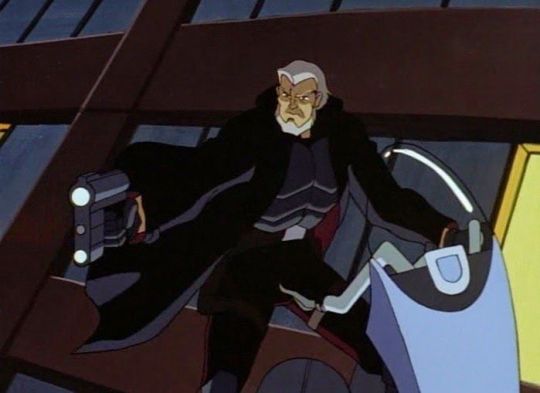
Gargoyles (Walt Disney Animation, 1994), character Macbeth
Along with that namesake, Macbeth acts fairly similarly to the character he was named after. He is very suspicious of everyone he encounters and resorts to violence more often than not. He also deals with the twisted torture of three witches who have watched over his actions during his life thus far. As Weisman is a huge fan of Shakespeare, his references continue, as is showcased during an episode in which the character/mythical spirit Puck is introduced. Puck was a character who appears in Shakespeare’s play A Midsummer Night’s Dream (1605).
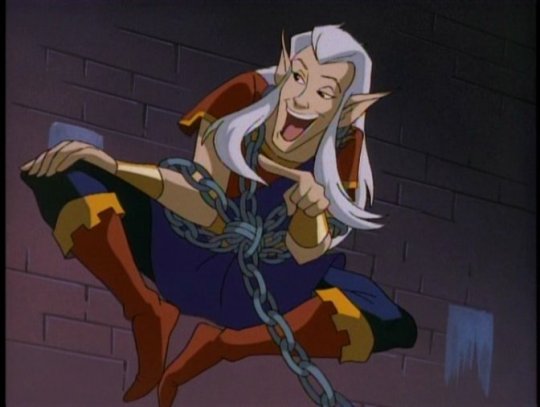
Gargoyles (Walt Disney Animation, 1994), character Puck
Puck is also very similar to the character of his inspiration, and thus is very mischievous to those who try to take control of his magic. What is similar between both Macbeth and Puck is that instead of having to spend a lot of screen time showing exactly what the personalities of these characters is, Weisman instead chose these Renaissance names due to the weight they already had in pop culture. People more than likely expected Macbeth and Puck to act similarly to the way they were portrayed in their Renaissance equivalents and that is certainly true in Gargoyles.
This kind of exposition through previously established, historical recognition is seen in other shows besides Gargoyles, such as Teenage Mutant Ninja Turtles.
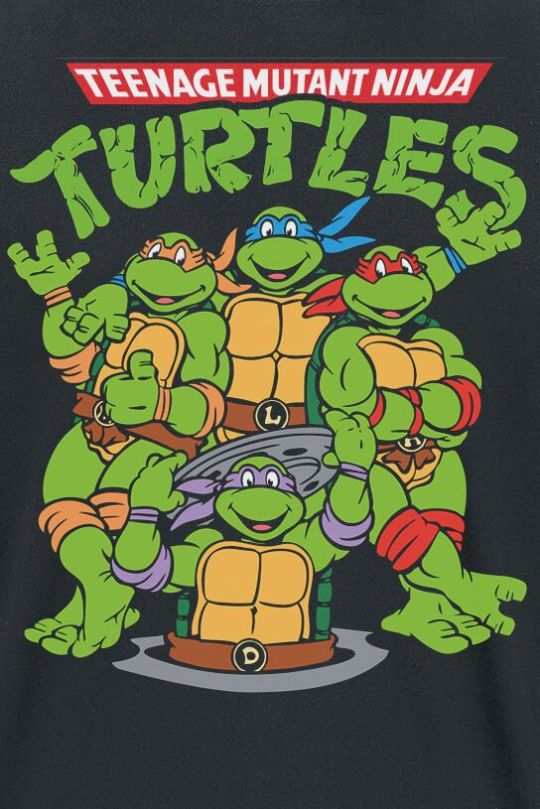
Teenage Mutant Ninja Turtles T-shirt merchandise (Murakami-Wolf-Swenson, 1988).
The four main turtles in this franchise are named after four prominent artists of the Renaissance: Leonardo, Raphael, Donatello, and Michelangelo. While these turtles are more warriors than artists and are vastly different in personality than their namesakes, their names serve a purpose to give them a kind of historical influence to their character that would have been lost if they were simply named “originally” without reference to previous works. Funny enough, the creators Eastman and Laird are history fans and landed upon the idea of the turtles having the name of Renaissance artists by chance (Tucker, “6 surprising facts”). Even though this may have been a seemingly random decision, the creators none the less gave the turtles a meaningful backstory, where their caretaker, Splinter, chose to name them out of a history book found in the sewer. Thus it emphasizes that these names are of important historical figures.
A kind of animation that takes historical recognition to a more interactive level though is the video games of the Assassin’s Creed Franchise. The games in which the most Renaissance references occur are Assassin’s Creed II and Assassin’s Creed Brotherhood, in which the player travels through Renaissance Italy. Along the way the player encounters characters who are also people from history, such as Niccolo Machiavelli (1469-1527), Leonardo da Vinci (1452-1519), and Rodrigo Borgia (1431-1503). Besides looking like their namesakes, these animated characters also have some of their most notable personality traits.
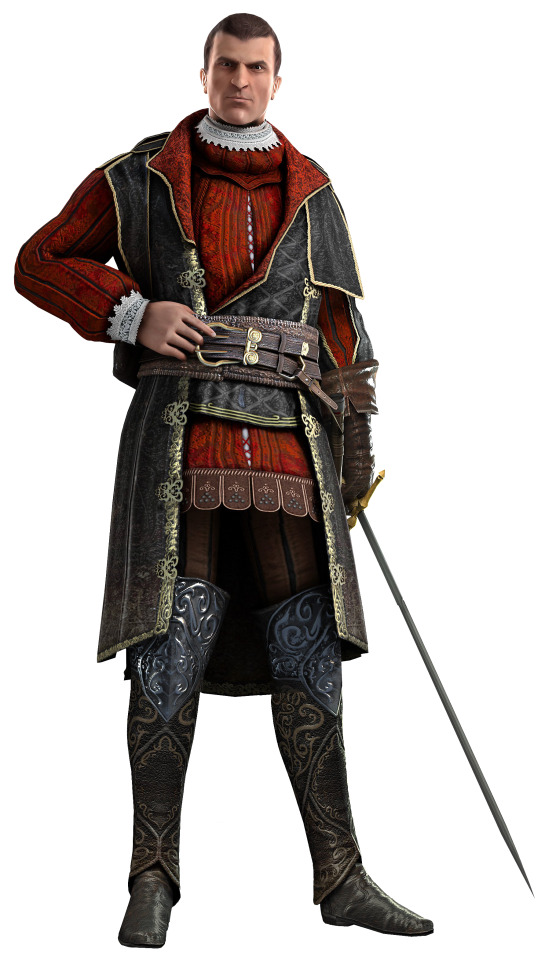
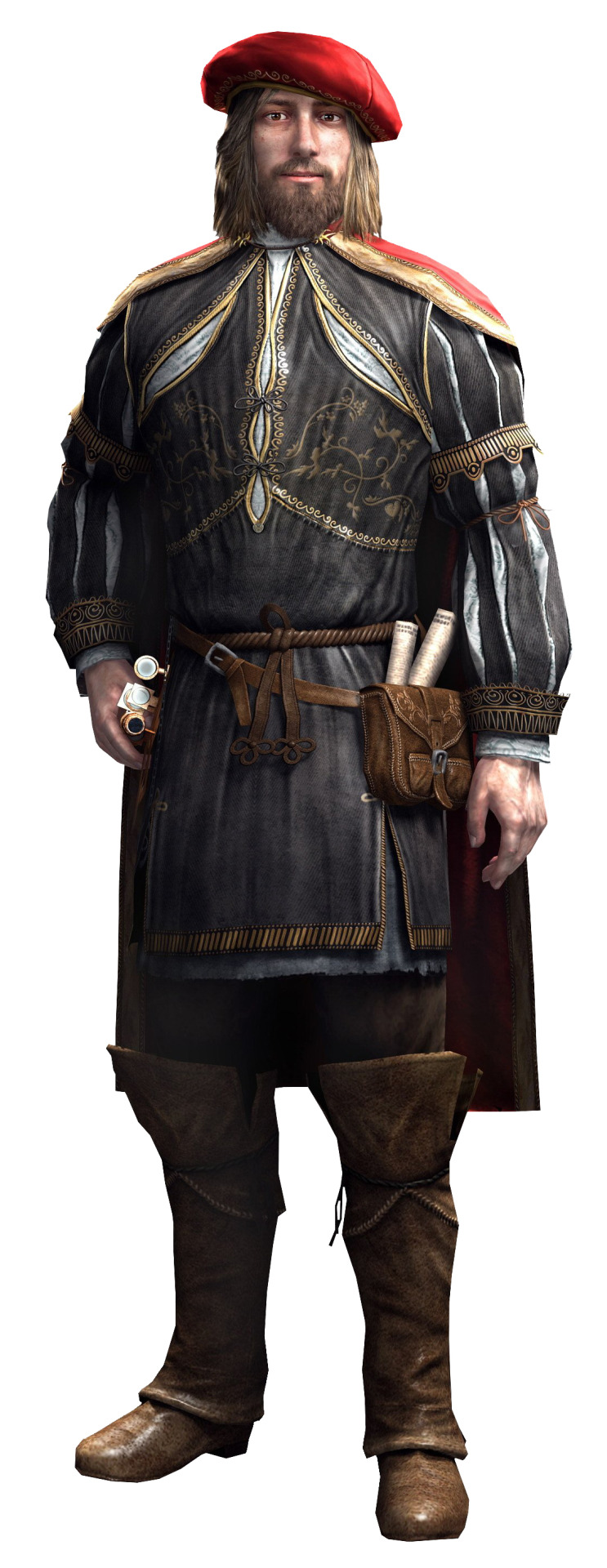
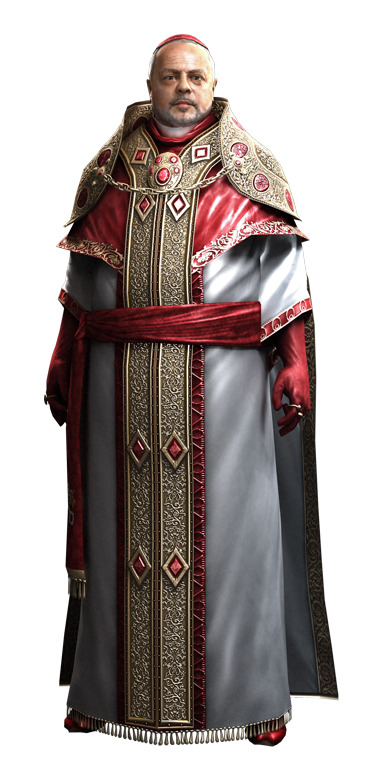
Assassin’s Creed II (Ubisoft, 2009) and Assassin’s Creed Brotherhood (Ubisoft, 2010) characters Machiavelli, Leonardo da Vinci, and Rodrigo Borgia, respectively.
Leonardo da Vinci is particularly interesting as they make him obsessed with inventions which end up aiding the player through the game. This kind of detail did not need to be added, but because it did, players who enjoy history likely would feel more engaged as it would feel as though these characters are living up to their perceived expectations of how they should act. Pop culture has told us that these Renaissance men are extremely complex and cannot be fully understood due to the lack of evidence of their everyday existences. However, providing interactive, animated experiences such as Assassin’s Creed has given consumers a new way to analyze the past and pose questions that will lead to further dialogue (Sheppard, “Historical References”).
Besides being relatable by name, other works can show a clear symbolic connection to the Renaissance through visuals. During one class session, my classmates and I were introduced to an image from Disney’s 1959 animated film Sleeping Beauty in which two kings, the fathers of Princess Aurora and Prince Phillip, are shown talking together throughout the film.
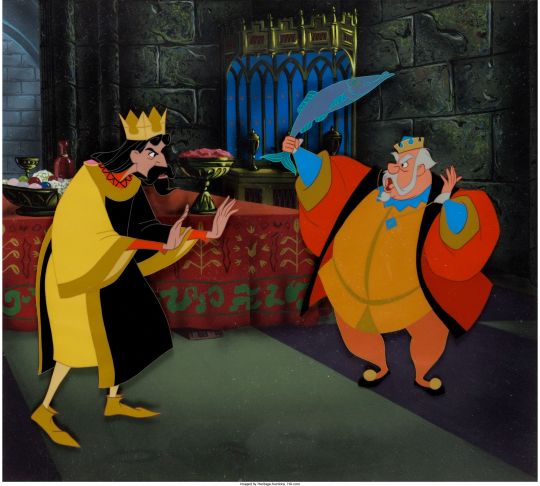
Sleeping Beauty, dir. Clyde Gironimi (Walt Disney Animation, 1959)
The stout king on the right, named Hubert, is shown to be a slight reference to King Henry VIII as Hubert’s stature and clothing mimics the visual look of the Holbein portrait. From the poofy sleeves to the facial hair, Hubert exudes the kind of flair that the Holbein portrait conveys. Artists take these historically recognizable characters into consideration when creating character designs, as it can make a rather complex role suddenly simply to understand. Instead of having him look like a completely original king with no base in historical fashion, the artists went with a design that would instead conjure up this kind of kingly appearance that continues to permeate our society.
One of the last examples that comes to mind when discussing historical recognition is Disney’s 1973 film Robin Hood which tells this classic tale using anthropomorphic characters.
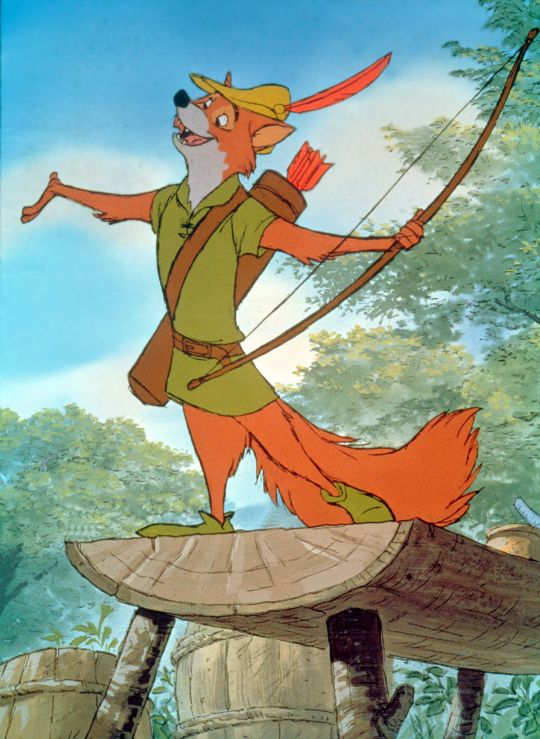
Robin Hood, dir. Wolfgang Reitherman (Walt Disney Animation, 1973)
Besides sharing the title character’s namesake, this fox version of Robin Hood also carries with him the signature bow and arrows that the legendary figure was told to have as his trusty weapon of choice. This Robin Hood therefore is similar to Gargoyles’ Macbeth in that the characterizations as well as the name are integral parts of the way the audience gains an understanding of the characters.
Whether the symbolism in animated media is blatant or subtle, it is important to recognize that imagery and historical figures are and will more than likely continue to be an important part of this medium, as it gives this era a chance to continue to influence the world of today. This is due to the fact that as a society we continue to claim the Renaissance as a crucial era of human history. We believe it should be remembered and built upon, even if our cultural understanding of the true nuances of this era happens to be very skewed into the belief that the Renaissance exemplified perfection in every way.
Sources:
Omar, Mohd and Ishak, Sidin. “Understanding Culture Through Animation: From the World To Malaysia.” Malaysian Journal of Media Studies, vol. 13, n. 2. (2011): 1-9.
Sheppard, Sally. “Historical References in Video Games: The Italian Renaissance.” Academia.edu Database. vol. 1 (2008): 1-6.
Tucker, Reed. “6 surprising facts about the Teenage Mutant Ninja Turtles.” NY Post, (2014).
#reanimatedrenaissance#renaissance#animation#education#derivative#art#cartoons#disney#historicalrecognition#memoryimage#gargoyles#assassins creed#video games#tmnt#robin hood
8 notes
·
View notes